Monster Triplane Wit a bit of Tinkering
As threatened previously, here are some pics and the background to what started out as one of those Hachette (very expensive) part works that claimed to give you a 1/8th scale model of the Red Baron's Fokker Triplane.
An old chap who died a couple of years ago became a mate after I discovered that, as a 10 year-old in 1940, he and a friend beat the village copper to the site where a famous Messerschmitt (the Duxford one) came down on 30/9/40, in the hope of liberating some interesting bits. He also made the occasional model but got into the habit of buying these part works, rarely seeing them through to completion. He was not without talent, just had a relatively short attention span.
After I showed him my 1/28 Triplane, he persuaded me to take over the Hachette model after he'd made various elements OOB, but become seduced by their Bismarck and then their U-boat kits. I reluctantly agreed, myself seduced by the thought of how much detail this kit would have. Rarely have I allowed myself to be led astray to the extent I was on discovering how comparatively superficial the detail was on this model that screamed out for tinkering with.
If anyone's lost the will to live, I'll be happy to detail the shortcomings I discovered, but the attached sequence of pics shows the end result. My advice to anyone who wants a model this big, buy the Hasegawa kit if you can get one.
The span of the top wing is 820 cm (just over 2ft 8ins) so after completion it ended up (because of the size) wrapped in plastic on a high shelf in my garage, which was a bit sad. My chum was very chuffed with the result and insisted that it was mine since I'd put in so much work.
After he died, I gave the model to his son who also cherished one of the few models his Dad had completed - the Hachette Spitfire Mk V. Both models now adorn his custom-built room somewhere in Paignton in Devon.
Paul
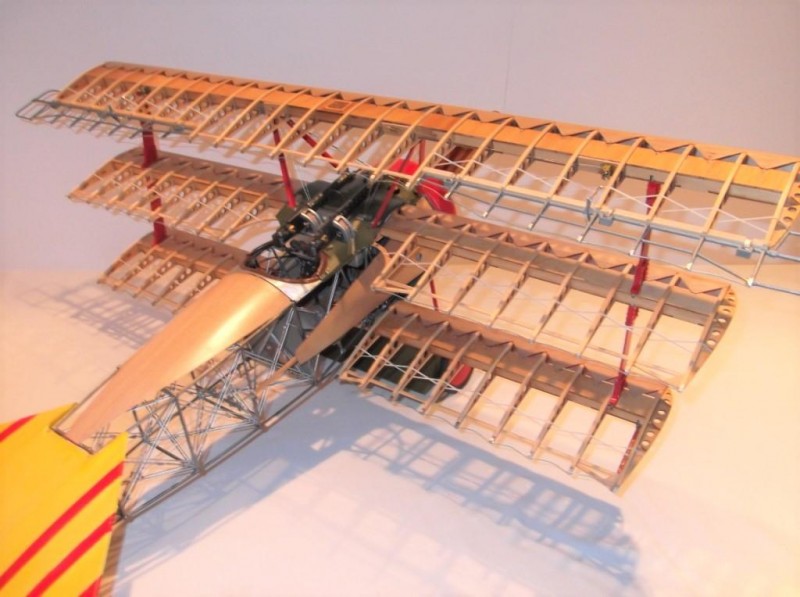

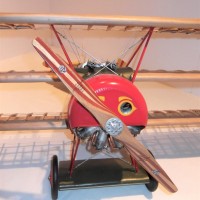
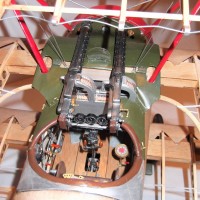


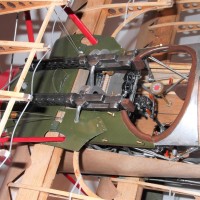
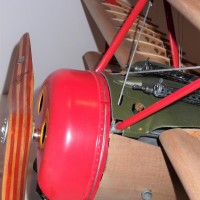
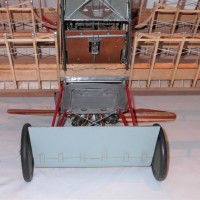
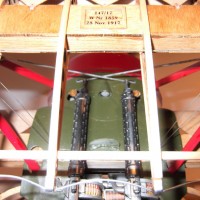
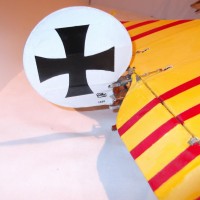
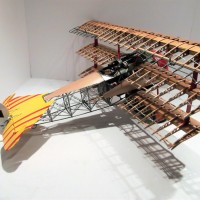
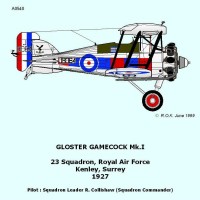
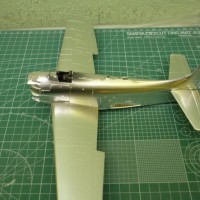

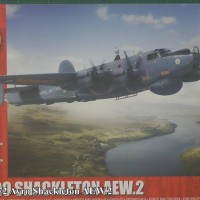
Looking very nice. Love the colours and the contrasting wooden bits. Been lusting for a large scale Fokker for long time but never had enough money to get it.
I suspect I'm related to the Hachettes, distantly. Might explain some things, hein? There is a publishing company, also. I perked right up when I saw that.
I suspect I'm related to the Hachettes, distantly. Might explain some things, hein? There is a publishing company, also. I perked right up when I saw that.
Paul, lovely build! Looks like the real thing, builds like it, looks like. Next best thing to having a full size one.
The name derivation sortof escaped me till I connected the grey cells. Some of their part works look really nice and detailed but I'm afraid this wasn't one of them. Great commercial concept though, many people not realising till later that the whole thing costs something humungous. A good thing to look back on but boy(!), the frustrations along the way. Fortunately I didn't buy the kit, just being the oily rag along the way.
Paul
Great model and a great story.
Wow - lots of work on display there! Nicely done!
Beautiful craftsmanship, Paul...a project I wouldn't dare undertake! 🙁
Very nice work.
Looks smashin' !
Nice work.
Beautiful work Paul. I have always enjoyed these types of builds. Two thumbs up Sir ! I really like this one...
A real lovely work of art, Paul. I commend you on the endeavor.
Real! It looks beautiful and REAL.
Excellent, Paul. As you say, very expensive - even the Hasagawa 1:8 kits are about £800 (when they can be found) so you are fortunate in your 'bequest'.
I just found a Hasegawa build on the Britmodeller site. Fantastic as the finished model is with even more careful detail than the one I built, I would guess the Jap one and the Hachette one OOB are similarly poor on accuracy and detail. The trouble with a lot of us mature modellers is that we never know when to stop trying to emulate the real thing only "smaller".
Thanks to everyone for their encouraging comments. It's amazing how working on such a big scale gets you doing things that get hidden or overlooked when the job is done. I haven't seen what my friend's son has done with it but he was threatening to display both the Spitfire Mk V and the Triplane at some local gatherings. Maybe someone else down that way in the West Country may have seen them.
Paul
Wonderful
I would place it as it is on my desk straight away !
There's a man with a big desk! I think it'd take up almost 1sq m of desk space. My desk is never tidy enough to find 1 sq ft of bare desk. Thanks for the comment - much appreciated.
Paul
Beautiful work, sir.
Paul, this is a wonderful build and great story to top it off, well done !
Miles away from my preferred subject choice but I just had to say well done with that one! That's a tremendous piece of modelling!
So enjoyable to see such wonderful work Paul. I'm envious of your skill & your patience!
I bought a Hachette part works a few years ago for a Flying Scotsman steam locomotive, I started it but sold it on to someone else in the end. Terrific on work on this triplane, you must be very proud.
The Hachette kits are seductively promoted to appeal to the enthusiast in us all. My late friend left a 75% complete Bismarck and a 40% complete U Boat which I sold on evilbay for his son, so a couple of people probably got a real bargain. The trouble with the Triplane was that the Hachette design merely skirted the outline of the a/c. Also, much of the detail that was supplied was made of a very fragile alloy (Zamaq I think) which I guess may be a zinc+? mix. Lost count of the bits fumble fingers here broke and then had to scratch build from plastic+ally. Stopped me from being a nuisance on the streets though.
Paul
What a fabulous build & a great story! Awesome, Paul!
As an A&P I always enjoy cutaways and de-skinned models. This one is superbly done. There are some wonderful and amazing cutaways of plastic kits on Pinterest. I can't imagine how modellers do this in such small scales.
This is my first introduction to Hachette models. I'll have to do a bit of research for more information as I already have five large scale U-boats. After viewing this beauty, I would think you had been led astray in the least.
The biggest issue to my mind with the Hachette formula is that they sell their "kits" as pieceworks, with a weekly instruction manual along with a package of pieces. In the UK, usually they promote the first part at around £2 but there are 52 parts with the rest of them around £6 a pop so they're not cheap. I saw what my chum had achieved with both his Bismarck and the U boat and they were both quite impressive when you're not actually involved in putting them together. My experience with the Triplane left me impressed with some of the basic structure, but it was woefully short on the nuts and bolts once you tried to tweak it a bit. And then there's those Zamaq parts which seemed to me to be made out of the same weak base alloy mix that the 6 shooters were that we we all had when we were kids firing rolls of caps at each other.
Lots of luck
Paul
One other thing is the fuselage frame rigging. Leave it to the Germans to over-engineer a design, insisting on cable rigging support for a welded fuselage frame.
Think of the weight savings had this complex rigging been eliminated, (not to mention working time on this model). It's strange that Fokker, rightly so concerned with external rigging, would retain this internal rigging leftover from earlier wooden frame designs. This is especially odd considering the wooden monocoque structures employed by Albatros and Pfalz.
I suspect your work history gives you a better idea of this. My only experience is from the modelling perspective and, while I tried to replicate the internal rigging arrangement from the diagrams I have and pictures I've seen, I know the rigging material used is a bit overscale since I couldn't find a medium that offered sifficient elasticity to retain its tautness that was a finer diameter. I guess I might be able to find one today but I suspect I won't repeat this modelling experience, much as I enjoyed much of the challenge it presented.
Had the whole triplane structure been lighter without the internal rigging than it already was, its agility would have caused more problems for the Allies than it did in any case. Rate of climb, flat turn agility and rapid manouverabilty seemed to have been the factors that outweighed speed/performace when the first models reached the front line in Aug/Sept 1917. The more powerful Allied newcomers like the SE5a/Camel/Brisfit and Spads effectively limited the Triplane's practical use. However, by late 1917, these same Allied machines were also making the Pfalz DIII and Albatros Dvs look unimpressive, a balance not redressed until Fokker's DVII started entering service. It still had the steel tubular framework and internal rigging with minimal external bracing. A fascinating study even for a non engineer/pilot like myself.
Cheers
Paul